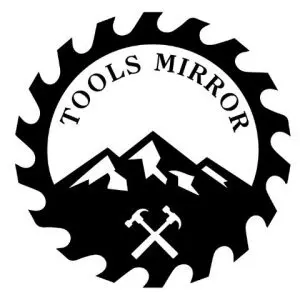Have you ever tried to cut a piece of plywood and ended up with a rough, splintered mess?😊 It’s super frustrating, right? But don’t worry! I’m here to help you find the perfect circular saw blade for cutting plywood like a pro.
A circular saw blade with a high tooth count and a thin kerf is best suited for cutting plywood. This type of blade produces smooth, clean cuts with minimal tear-out.
Cutting through plywood can be a challenging task for DIYers and professionals alike. Using the right circular saw blade can make all the difference in achieving accurate and efficient results. The blade you choose should have a high tooth count and a thin kerf, which is the width of the blade’s teeth.
The high tooth count ensures a smooth and clean cut, while the thin kerf reduces the amount of material being removed, resulting in less tear-out. It’s also essential to choose the right blade size for your saw and to make sure the blade is sharp and properly aligned.
With the right blade and technique, cutting through plywood can be a breeze.
Let’s dive in!
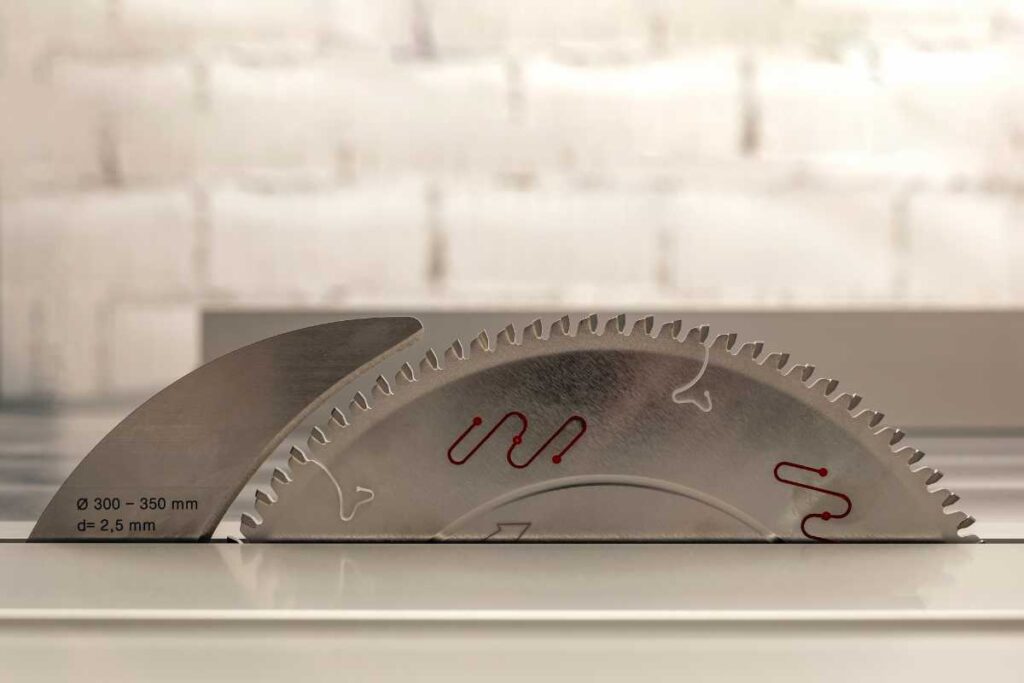
Why Plywood Needs Special Blades?
Plywood is a special kind of wood that’s made by gluing thin layers of wood together. It’s strong and useful, but cutting it can be tricky. If you use the wrong blade, the edges can get all rough and splintery. That’s why we need a special blade to get a nice, smooth cut. Think of it like using the right crayon for coloring – it makes all the difference! 🖍️
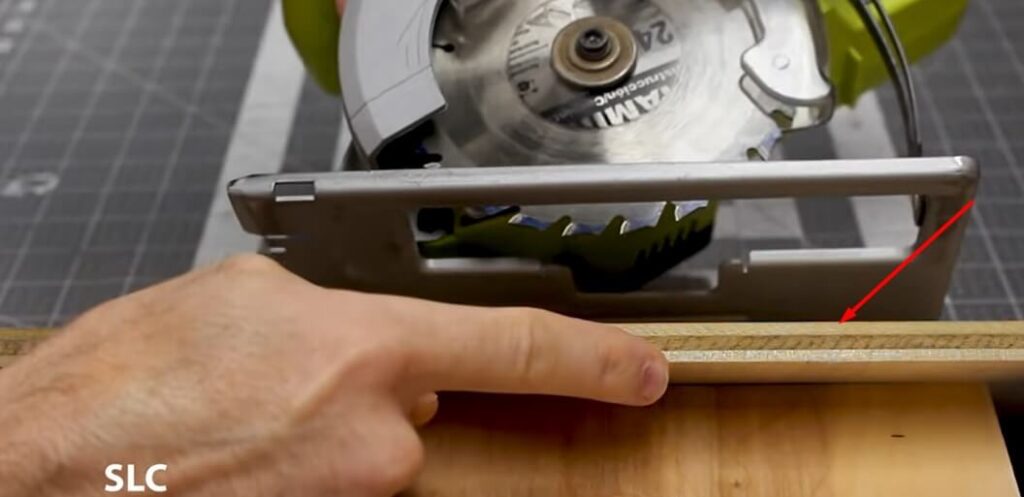
Factors To Consider When Choosing A Circular Saw Blade For Plywood
If you want to achieve a flawless finish on plywood, then it’s crucial to select the right circular saw blade. The correct blade choice will depend on the type and thickness of the plywood and the type of cut you’re making.
Here are some essential factors to consider before choosing a circular saw blade for plywood.
Types of Circular Saw Blades
There are lots of different saw blades out there, but for plywood, we need to be a bit picky. Let’s talk about the most common types:
General Purpose Blades
These blades can do a bit of everything. They’re like your favorite toy that works for many games. But, just like that toy might not be the best for every single game, these blades aren’t always perfect for cutting plywood.
Fine-Finish Blades
These blades are the superstars for cutting plywood. They have lots of tiny teeth that make very smooth cuts, just like a fine brush makes smooth lines when you’re painting. 🎨
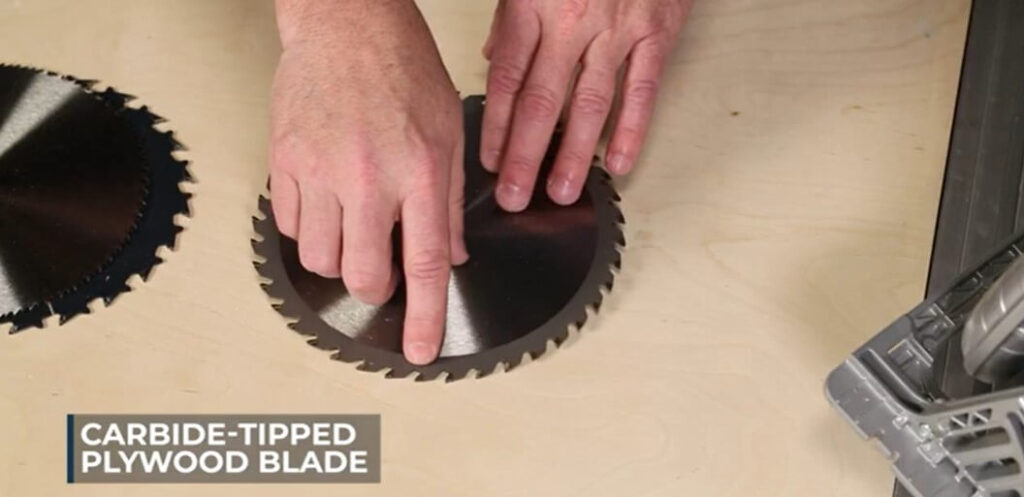
Blade Size Matters
Circular saw blades come in different sizes. For plywood, the most common sizes are 7-1/4 inches and 10 inches. Imagine using a big brush to paint a small picture – it wouldn’t work well, right? The same goes for saw blades. The size you choose should match your saw and the size of the plywood you’re cutting.
For plywood, a blade with a diameter of 7-1/4 inches is adequate for most cuts.
Tooth Count And Why It’s Important
The number of teeth on a blade is super important. More teeth mean smoother cuts. For plywood, a blade with 40 to 80 teeth is usually the best. It’s like having more crayons in your box – you can color more smoothly and precisely. 🖍️
Tooth Shape And Angle
The shape of the teeth on the blade also matters. Let’s look at two common shapes:
ATB (Alternate Top Bevel)
These teeth are angled and alternate from left to right. They’re great for making clean cuts in plywood, just like using a sharp pencil for drawing fine lines. ✏️
FTG (Flat Top Grind)
These teeth are flat on top and are better for ripping through wood quickly. They’re not the best for plywood because they can make rough cuts, like using a dull crayon.
Plate Thickness
The thickness of the plate will affect the blade’s stiffness and ability to make precise cuts. Choose a blade with a thicker plate for better stability and less vibration.
Kerf Width Explained
The kerf is the width of the cut the blade makes. A thin kerf means less wood is removed, making the cut smoother and saving your saw’s energy. It’s like using a narrow brush for detailed painting – it’s more precise. 🎨
Speed And RPM Of The Saw
The speed and rpm of the saw will determine how smoothly and accurately the blade cuts through plywood. Ensure that the blade’s rpm rating matches the saw’s rpm rating to prevent damage.
Blade Material: Carbide-Tipped vs. Steel
Blades can be made from different materials. Tungsten-Carbide-Tipped (TCT) blades stay sharp longer and make cleaner cuts, just like using high-quality crayons that don’t break easily. Steel blades are cheaper but dull faster, like crayons that wear down quickly.
Blade Coatings for Smooth Cuts
Some blades have special coatings that reduce friction and make cutting smoother. It’s like putting oil on your bike chain to make it run better. These coatings help the blade slide through the wood more easily, giving you a nice, clean cut.
Choosing the right circular saw blade for plywood will make your woodworking tasks easier, save time, and produce quality cuts.
Remember to match the blade’s characteristics with the plywood’s thickness and type for the best results.
How To Select The Right Circular Saw Blade For Your Plywood Project?
Perfectly-cut plywood pieces are essential for a quality woodworking project. If you’re choosing a circular saw for the job, selecting the correct saw blade is also crucial. When selecting a circular saw blade for your plywood project, keep these key points in mind:
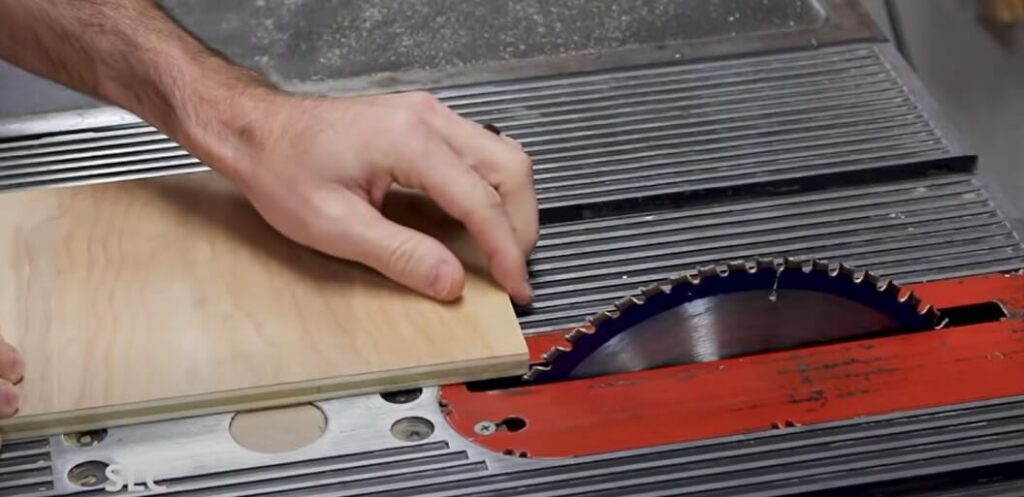
Consider The Type Of Cut Needed
Before selecting a circular saw blade for your plywood, you should decide the type of cut you want to make. The type of cut needed will depend on your woodworking project’s needs. Here are some common types of cuts:
- Ripping cuts: It refers to the cut made along the plywood’s length. Use a rip blade since they have fewer teeth and can remove more material.
- Crosscutting: These cuts are made across the plywood near its width. Use a crosscut or a combination blade that has both ripping and crosscutting functionality.
- Plywood cutting: Since plywood tends to splinter when cut with a standard saw blade, it’s vital to use a blade design specifically for plywood or have an ATB (alternate top bevel) geometry.
Determine The Thickness Of The Plywood
Plywood comes in various thicknesses, from ⅛-inch thin to three-quarters of an inch thick. Every blade will have a maximum cutting depth, and the thickness of the plywood will determine which blade you should choose.
For instance, a 7¼-inch circular saw blade will usually cut only 2-½ inch deep, and a 6-½ inch blade will cut roughly 2¼ inch deep.
Identify The Type Of Plywood Being Used
Plywood comes in various types, with varying density, textures, and compositions. Before you pick up a saw, it’s important to know the type of plywood you’re dealing with. Here are the typical plywood categories:
- Softwood plywood: Made from softwood trees like pine and fir, it’s used for building materials like roofs, walls, and floors.
- Hardwood plywood: Made from hardwood trees like oak and birch, it is predominantly preferred for furniture and cabinetry.
- Marine plywood: Marine plywood contains waterproof resin, and it is suitable for making boats and outdoor furniture.
- MDF and particle board: These dense boards made from wood particles and dust are often used for carpentry, cabinetry, and flooring.
Consider The Saw Being Used
Circular saws come in different shapes, sizes, and power levels. The type of blade you choose will depend on the saw being used.
For instance, if you’re using a cordless circular saw that is portable and has a limited power supply, use a thin kerf blade suitable for cordless saws to get the job done without losing power.
Important Safety Tips When Using A Circular Saw Blade
It’s essential to avoid any accidents or injuries when working with a circular saw blade. Here are some critical safety precautions to keep in mind:
- Always wear protective clothing, including gloves, boots, earplugs, and safety glasses, before using a circular saw blade.
- Hold the saw firmly with both hands and ensure that the blade is correctly installed and tightened.
- Set the depth of the cutting straight, begin cutting, and ensure that the blade’s guard is in place.
- Don’t ever try to cut the wood while it’s propped freehand; it’s always best to use a saw guide.
- Don’t ever reach around saw blades; when cutting, always have wood firmly clamped.
Happy Woodworking!
Choosing the Right Brand
There are lots of brands out there, but some are better than others. Brands like Freud, Diablo, and DeWalt are known for their high-quality blades. It’s like choosing the best brand of markers for your drawings – you want the ones that work best and last the longest. 🖊️
In this scope, I will review the top-rated circular saw blades for plywood, their pros and cons, and compare them in a handy chart for your convenience.
Freud LU79R006M20 160mm Thin Kerf Ultimate Plywood Blade:
This blade has a laser-cut stabilizer vent that reduces vibration and keeps the cut straight and precise. It also features High Alternate Top Bevel (HiATB) tooth that provide a smooth finish on plywood, minimizing splintering.
The blade has a Modified Triple Chip Grind (MTCG) tooth design and Premium TiCo HI-Density carbide construction that makes it highly durable, and it is suitable for cutting a wide range of materials besides plywood.
Click here to buy the Freud LU79R006M20 from Amazon.
Dewalt DW3106P5D60I Series 20 60-Tooth Circular Saw Blade:
This blade has 60 teeth that produce a fine finish on plywood, with minimal splintering. It has a computer-balanced plate that reduces vibration, providing a smooth cutting experience. The blade also has a carbide construction that makes it highly durable, with a long lifespan.
Click here to buy the Dewalt DW3106P5D60I from Amazon.
3Pack Combo 7-1/4 Inch Circular Saw Blades
OA-BRES circular saw blades are crafted from durable premium alloy steel and feature construction-grade tungsten carbide teeth that are both hardened and sharpened for efficient woodworking. The blades have an ATB (Alternating Top Bevel) offset tooth design, and their sharp cutters with thin kerf ensure smooth, fast, and precise cuts.
The 3-pack combo includes 24T, 40T, and 60T blades, suitable for various wood-cutting tasks. Additionally, these blades are affordably priced, making them an excellent choice for budget-conscious buyers.
Pros And Cons Of Each Blade
Freud LU79R006M20:
Pros:
- Stabilizer vent reduce vibration
- 100 teeth produce a smooth finish
- Carbide construction makes it highly durable
Cons:
- One of the most expensive blades on the market
Dewalt DW3106P5D60I:
Pros:
- Fine finish with minimal splintering
- Computer-balanced plate reduces vibration
- Carbide construction makes it highly durable
Cons:
- Some users find it less durable than other blades in its price range
OA-BRES Circular Saw Blades:
Pros:
- Premium alloy steel and Carbide teeth construction
- Fine teeth minimize splintering
- Affordable price
Cons:
- Very thin and prone to vibrating from side to side
Comparison Chart
| Blade Name | Number Of Teeth | Vibration Reduction | Price |
|---|---|---|---|
| Freud LU79R006M20 | 100 | Yes | Expensive |
| Dewalt Dw3106P5D60I | 60 | Yes | Moderate |
| OA-BRES Circular Saw Blades | 24/40/60 | No | Affordable |
There are many excellent circular saw blades available for plywood, depending on your budget and requirements. From the reviewed blades, Freud LU79R006M20 is the most expensive, but it has several features that justify the price. Dewalt DW3106P5D60I is a moderately priced blade, while OA-BRES Circular Saw Blades is an affordable option for those on a limited budget.
Regardless of the blade you choose, ensure that it meets your needs and specifications.
Maintenance Tips for Your Blade
To keep your blade working well, you need to take care of it. Clean it regularly to remove any gunk that builds up. Store it properly so it doesn’t get damaged. And if it gets dull, sharpen it or replace it. Think of it like taking care of your favorite toy – if you treat it well, it will last a long time. 😊
10+ Ways Prevent Plywood Tearout | Woodworking Tips and Tricks
FAQs: What Circular Saw Blade For Plywood?
What Size Blade Should I Use for Plywood?
For clean and splinter-free cuts in plywood, use a thin kerf blade. A 7-1/4 inch blade with 40 teeth is ideal.
Can I Use a General-Purpose Blade on Plywood?
Yes, you can, but it won’t provide clean and splinter-free cuts. Opt for a blade designed explicitly for plywood.
Carbide or High-Speed Steel, Which is Better?
There’s no comparison. Carbide-tipped blades are much better and provide clean cuts. High-speed steel blades are not recommended for plywood.
How Many Teeth Should My Blade Have?
A blade with 40 to 80 teeth is ideal for plywood. 40 teeth are excellent for rip cuts, while 80 can give you a smoother finish.
What Is A Rip Cut And Crosscut Blade?
A rip-cut blade has fewer teeth, and it is perfect for cutting along the wood grain. While a crosscut blade has more teeth and is perfect for cutting across the grain.
Can I Sharpen My Blade For Plywood?
It’s not advisable to sharpen your blade yourself. Instead, seek the services of a professional to keep your blade sharp and in good condition.
Does Plywood Blade Work Only For Plywood?
No, the plywood blade is not limited to plywood only. It can also cut through other materials like hardwood, softwood, and composite materials.
Conclusion
Choosing the right circular saw blade for plywood can make your woodworking projects so much easier and more fun! Remember to look for a blade with the right tooth count, tooth shape, kerf width, and material. Take care of your blade, and it will take care of you. Happy cutting! 😊
